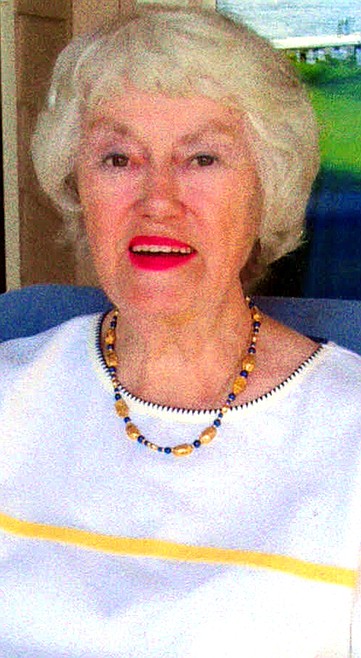Greens are better for you than you know
Since time immemorial, mamas and grandmas have told their children to eat their greens — generally to unhearing ears.
But it’s so true — and it turns out that greens, especially the darker ones, are really good for you! Known for their plethora of potassium, they are also a surprising source of calcium. Chard, spinach, kale, broccoli, cabbages (green, red, Napa, Bok Choy, Brussels sprouts, etc.), parsley, cilantro, beet, collard and mustard greens, arugula, romaine and dark-leafed red lettuce (head lettuce not so good), green beans and herbal greens (basil, mint, etc.) are all power-houses of healthful eating.
We all know that getting enough potassium is vital for lowering high blood pressure, hypertension, lowering stroke risk, and (along with calcium) bone protection. Too, teamed with the compounds that bind to it in greens, fruits and veggies, it generates alkali in the body, which balances the acid load in our systems so that we don’t lose calcium in our urine (of which most everyone is unaware).
As to calcium, while we all know it is necessary for strong bones, it has proven to be a surprising source of protection and aid for women afflicted with PMS and the accompanying anxiety, depression, headaches, and abdominal cramps that are associated with it.
Knowing what’s good for us and utilizing it can, however, be “iffy.” Produce counters do indeed hold a great variety of the aforementioned greens. But are they safe? Those who grow their own food are fortunate, for they know it’s pesticide-free — as is generally the case at the Farmers Market; however, we can’t always be sure at the grocery store. If it’s marked “Organic”, fine, but if not, what to do? First, we can consider a recent chart from Consumer Reports that lists 10 items that should always be bought organically (regardless of what country they’re from): Peaches, tangerines, nectarines, cantaloupe (U.S. only!), cranberries, green beans, sweet bell peppers, hot peppers, sweet potatoes, carrots.
That said, the list of non-organic listed items — but termed low-risk, is much longer, as follows: Avocado, plums, apples, cantaloupe (from Honduras, Mexico, Costa Rica, Guatemala!), mangos, pears, oranges, cherries, grapefruit, watermelon, blueberries, grapes, raspberries, bananas, papaya, pineapples, winter and summer squash, cucumbers, snap peas, tomatoes (all), celery, kale, potatoes, asparagus, eggplant, lettuce, spinach, collard greens, cauliflower, cilantro, onions, bulb and green), broccoli, mushrooms. cabbage. Happily, for today’s readers, there are a lot of greens listed; so hie thee to the closest store and take your body’s health in hand! Just remember to always wash and/or rinse it well!
There’s just room for a couple of appropriate recipes for your enjoyment along with this quick tip for your next coleslaw: Combine green, red, and Napa cabbage and finely shredded and de-stemmed spinach along with chopped green onion tops for a really great offering! Add chopped apple and some raisins or craisins for even more tasteful vitality.
Spinach Walnut Salad with Brie and Fruit
(for two, double as needed)
1/4 cup olive oil
1 1/2 tablespoons white wine vinegar
8 cups spinach leaves, stemmed and torn into bite-size pieces
1/2 cup thinly sliced red onion
6 ounces Brie* cheese, diced, room temperature
1 cup croutons (seasoned if desired – purchased or your own)
1/2 cup toasted walnut pieces
1/2 cup sliced/diced/whole fruit in season (mangos, apples, oranges, dates, grapes, blackberries, strawberries, etc).
Whisk oil and vinegar to blend in a small bowl; season to taste with salt and pepper. Combine spinach, onion, and the cheese in a salad bowl with walnuts and a choice of fruits if desired. Set aside. Heat croutons in the oven or toss quickly in a lightly buttered hot skillet.
Toss salad with enough dressing to coat well; divide between two plates. Sprinkle equally with heated croutons.
* Use crumbled Feta or other favorite cheese as desired.
Tip: Brie and other soft cheese dice best when chilled. Bring to room temperature after dicing.
Our last recipe has 466 milligrams of calcium, half the needed daily intake of fiber, 155 milligrams of magnesium, half the needed daily potassium, and nearly all of the needed daily Vitamin C — plus rich flavor. Enjoy!
Swiss Chard, Eggplant & Mushroom Lasagna
(Large recipe for 10; halve if desired)
3 medium eggplants, trimmed, sliced lengthwise 1/3-inch thick
3 1/2 pounds (6-plus cups) sliced Swiss chard leaves, thick stems trimmed away
2 cups mushrooms, sliced
3 cloves garlic, finely chopped
1/4 teaspoon red pepper flakes
3 cups ricotta (or small-curd cottage cheese) drained
2 large eggs
4 cups marinara sauce*
1 14-ounce pkg. lasagna noodles
1 1/2 cups grated Mozzarella cheese
1/4 cup grated Parmesan cheese
Precook eggplant: Heat broiler; coat eggplant slices with olive oil spray and arrange in a single layer on a baking sheet. Broil 6 inches from heat till browned (4 minutes) then flip and broil other sides till browned and tender (2 minutes). Heat oven to 400 degrees.
In a large skillet in a little olive oil, cook mushrooms, stirring, until liquid has evaporated, about 6 minutes. Reduce heat to medium-low and add garlic, red pepper flakes and chard, cooking, tossing and stirring till liquid is absorbed, about 3 minutes. Stir and set aside.
Cook lasagna noodles four at a time in plenty of boiling salted water (4-6 minutes), remove carefully and lay gently side by side on a wet cloth to drain so they do not stick together.
Combine ricotta and eggs in a bowl and stir in the mushroom-chard mixture. Spread 1 cup of the marinara in a deep 13x9-inch baking dish. Add 4 noodles and cover with a third of the ricotta mixture, then a third of the eggplant slices. Sprinkle with half the Mozzarella, then repeat until all ingredients are used, topping with the remaining marinara, Mozzarella, and Parmesan. Bake in a moderately hot oven — 400 degrees — for about 20 minutes or till bubbling and golden brown. If the dish browns too quickly, turn the oven down to 375 degrees (individual ovens differ greatly).
* I use 2 cups marinara for lining the baking dish and 2 cups Alfredo sauce for topping for a less acidic dish.
Editor's note: For many years, Valle Novak wrote gardening and cooking columns for the Daily Bee. "Weekend Gardener" and "Country Chef" became renowned for their humor, information, and common-sense advice on how to do everything from planting to cooking. She left behind many columns such as this one from September 2015 to delight her many fans.





